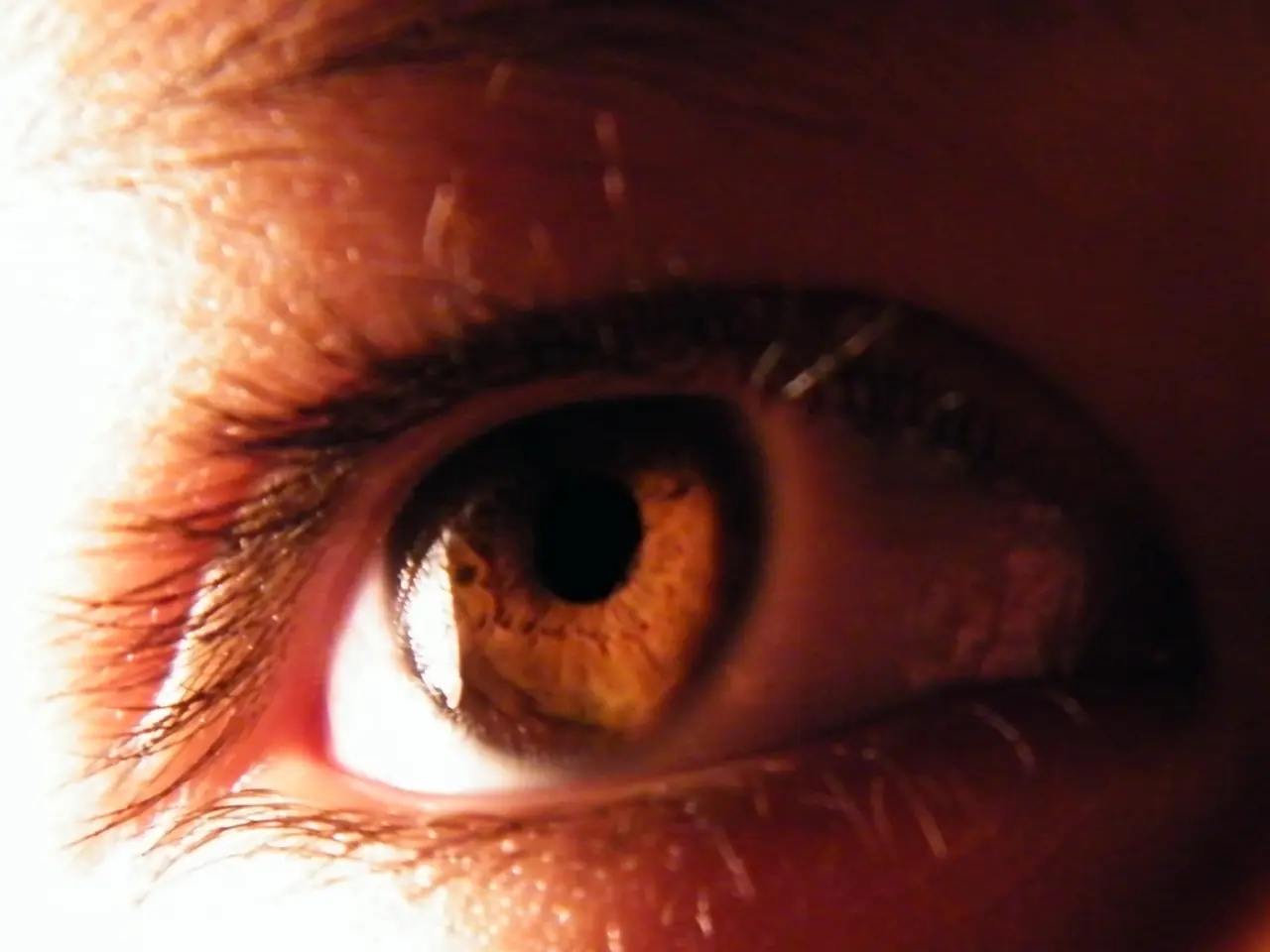Causative Factors Behind Enlarged Pore Sizes and Coarse Skin Texture
Large pores, openings of the hair follicles that contain sebaceous glands responsible for releasing natural oils or sebum, can be a common concern for many individuals. These pores can become more visible due to a variety of factors, including genetics, excess sebum production, aging, sun damage, and clogged pores with dead skin cells and debris.
Genetics often sets a baseline for pore size, with some people inheriting larger pores from their parents. Overactive oil glands can produce too much sebum, which combines with dead skin cells and clogs pores, causing them to stretch and appear larger. As we age, collagen and elastin (proteins that keep skin firm and elastic) decrease, leading to skin sagging and stretched pores. UV rays from the sun break down collagen and elastin, weakening skin structure and enlarging pores.
To minimize or treat large pores, a consistent skincare routine and sometimes professional treatments are essential. Regularly removing dirt, oil, and makeup prevents clogged pores. Ingredients like salicylic acid help clear out dead skin cells and excess sebum. Topical retinoids promote skin cell turnover and stimulate collagen, improving pore appearance. Using sunscreen prevents collagen breakdown and further pore enlargement.
Professional treatments such as chemical peels, laser therapy, microneedling, and certain dermatological treatments can stimulate collagen production and tighten pores. Using primers and pore-minimizing products can provide an instant appearance of smaller pores.
While genetics and aging are uncontrollable factors, regular cleansing, exfoliation, sun protection, and targeted treatments can significantly reduce the appearance of large pores and improve skin texture over time. Exfoliating once a week can help minimize the appearance of pores by removing dead skin cells that clog them.
It is important to note that factors like hormonal imbalances, extremely dry conditions, poor diet, and the use of wrong skincare products can trigger the sebaceous glands to produce more oil or sebum than what the skin needs, causing pores to expand and appear bigger.
For those seeking professional help, Cutis Laser Clinics, located at 9 Scotts Road Pacific Plaza, Scotts Medical Center #08-07, Singapore - 228210, offers non-invasive treatments for large pores. They also encourage scheduling a consultation with a Harvard-trained aesthetic doctor to find out which treatment is right for reducing the appearance of large pores.
In addition, considering using an exfoliating cleanser or mask at least once a week can contribute to maintaining smaller-looking pores. Men, who generally produce more sebum and have larger pores than women, should also be mindful of their skincare routine to prevent further enlargement of pores. Hormonal fluctuations can increase the appearance of enlarged pores in many women, so it is essential to address these factors as well.
References: [1] American Academy of Dermatology. (2021). Acne. Retrieved from https://www.aad.org/public/diseases/acne [2] Mayo Clinic. (2021). Large pores: Causes, treatments, and prevention. Retrieved from https://www.mayoclinic.org/healthy-lifestyle/adult-health/expert-answers/large-pores/faq-20058113 [3] WebMD. (2021). How to Shrink Large Pores. Retrieved from https://www.webmd.com/beauty/large-pores-beauty-tips [4] Healthline. (2021). How to shrink large pores: 12 dermatologist-approved tips. Retrieved from https://www.healthline.com/health/beauty-skin-care/how-to-shrink-large-pores [5] Byrdie. (2021). The Best Products to Shrink Large Pores. Retrieved from https://www.byrdie.com/how-to-shrink-large-pores-3839496
- Genetics and aging can lead to larger pores, but a consistent skincare routine and targeted treatments can help reduce their appearance.
- Exfoliation once a week can help minimize the appearance of pores by removing dead skin cells that clog them.
- Overactive oil glands can be a result of hormonal imbalances, poor diet, or using the wrong skincare products, leading to increased sebum production and enlarged pores.
- Speak with a Harvard-trained aesthetic doctor at Cutis Laser Clinics for non-invasive treatments to address large pores.
- Men, who produce more sebum and have larger pores than women, are encouraged to pay attention to their skincare routine to prevent further pore enlargement.
- For comprehensive advice on large pores, consider resources such as the American Academy of Dermatology, Mayo Clinic, WebMD, Healthline, and Byrdie.




